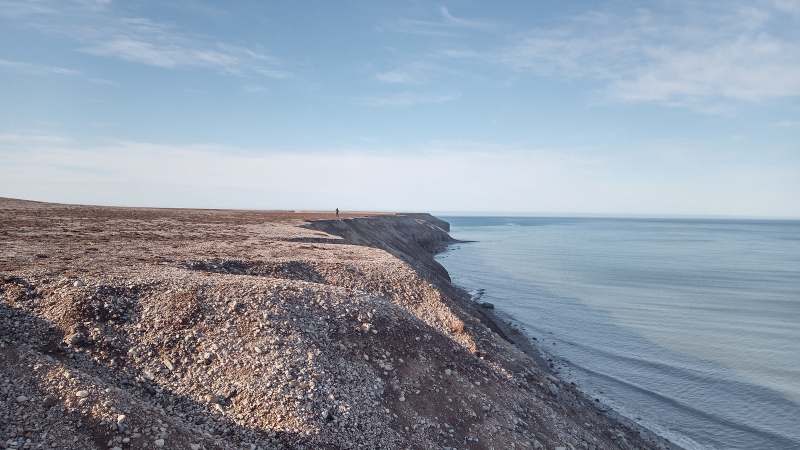The PhD defence and trial lecture will be held in Auditorium 1 in The Geology Building. In some cases, it will be possible to attend the trial lecture and dissertation digitally, in that case a link to Zoom will be posted.
Trial lecture
Tuesday 21 November, 10:15-11:00, Aud 1, The Geology Building
Hazards and risks in high mountain permafrost environments
Conferral summary (in Norwegian)
Pågående klimaendringer påvirker områder med permafrost over hele verden, og forårsaker økning av bakketemperatur og tykkelse av permafrostens aktiv lag som tiner om sommeren. Endringene påvirker bakkens stabilitet, spesielt gjennom deres effekt på isinnholdet i bakken. Konsekvenser er forskyvninger som setninger på grunnoverflaten, skråningsfeil og kysterosjon. Denne doktorgradsavhandlingen undersøker dette komplekse samspillet, og bruker både feltobservasjoner og numerisk modellering som metode.
Main research findings
Popular scientific article about Aga’s dissertation:
The thermal regime and stability of permafrost in sloping terrain - observations and numerical modelling
Ongoing climate change is impacting permafrost environments worldwide, causing a rise in ground temperatures and deepening of the active layer. These changes influence the stability of the ground, especially through their effect on ground ice content. Consequences include ground displacements such as subsidence of the ground surface, slope failures and coastal erosion. This doctoral thesis investigates this complex system interaction based on both field observations and numerical modelling. Field observations on Svalbard show that the thermal regime of permafrost is dependent on local factors, such as the proximity to the sea. Furthermore, erosion of the coastal cliffs on the Brøgger peninsula has increased in recent years, a trend likely be attributable to changing climatic conditions.
Numerical models are a simplification of the complex natural conditions, but contribute to our understanding of the underlying processes. Within this doctoral thesis, a new model scheme is developed that (i) computes a modified surface energy balance for sloping terrain, (ii) accounts for ground ice formation and thaw and (iii) performs a slope stability analysis. By coupling this model to atmospheric data, it is possible to evaluate the climate-dependency of ground ice formation and thaw in regions with permafrost, as well as slope stability in permafrost environments.

Photo and other information:
Press photo: Juditha Aga, portrait; 1000px. Photo: Private
Other photo material: Photo with description and credit as specified in the article above, size 2000px.
